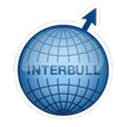||<tablewidth="100%">Status as of: PLEASE ENTER A DATE (YYYY-MM-DD)
||
Form GENO DESCRIPTION OF NATIONAL GENOMIC EVALUATION SYSTEMS
Country (or countries) |
|
|
Main trait group1 |
|
|
Breed(s) |
|
|
Trait definition(s) and unit(s) of measurement2 |
|
|
Source of genotypes (chips used) |
|
|
Imputation method for missing genotypes |
|
|
Propagation of genomic information to non-genotyped descendants and ancestors |
|
|
Animals included in reference population (males, females, countries included, total number) |
|
|
Source of phenotypic data (DYD, deregressed proofs, national EBVs and/or MACE evaluations) |
|
|
Other criteria (data edits) for inclusion of records |
|
|
Criteria for extension of records (if applicable) |
|
|
Sire categories |
|
|
Genomic model (linear, Bayesian, polygenic effect, genotypes or haplotypes) |
|
|
Blending of direct genomic value (DGV) with traditional EBV |
|
|
Environmental effects in the genetic evaluation model |
|
|
Adjustment for heterogeneous variance in evaluation model |
|
|
Computation of genomic reliability |
|
|
Blending of foreign/Interbull information in evaluation |
|
|
Genetic parameters in the evaluation |
Use Appendix GENO for heritability/genetic variance estimates; for multiple-trait genetic evaluations, provide genetic correlation estimates between traits separately.Use also appendices PR, CO, BCO, SM, LO, CA, as applicable, if you participate in the international genetic evaluations of Interbull |
|
System validation |
|
|
Expression of genetic evaluations |
|
|
Definition of genetic reference base |
|
|
Labeling of genomic evaluations |
|
|
Criteria for official publication of evaluations |
|
|
Number of evaluations / publications per year |
|
|
Use in total merit index |
|
|
Anticipated changes in the near future |
|
|
Key reference on methodology applied |
|
|
Key organisation: name, address, phone, fax, e-mail, web site |
|
|
1) Either: Production (e.g. milk, fat, protein), Conformation, Health (e.g. mastitis resistance, milk somatic cell, resistance to diseases other than mastitis), Longevity, Calving (e.g. stillbirth, calving ease), Female fertility (e.g. non-return rate, interval between reproductive events, number of AI’s, heat strength), Workability (e.g. milking speed, temperament), Beef production, Efficiency (e.g. body weight, energy balance, body conditioning score), or Other traits. Form GENO Appendix GENO Parameters used in genetic evaluation
Country (or countries): |
|
Main trait group: |
|
Breed (repeat as necessary): |
|
Trait |
Definition |
ITBa |
h2b |
geneticvarianceb |
official proofstandardisation formulac |
|
|
|
|
|
|
|
|
|
|
|
|
|
|
|
|
|
|
|
|
|
|
|
|
|
|
|
|
|
|
|
|
|
|
|
|
|
|
|
|
|
|
|
|
|
|
|
|
|
|
|
|
|
|
|
|
|
|
|
|
|
|
|
|
|
|
|
|
|
|
|
|
|
|
|
|
|
|
|
|
|
|
|
|
|
|
|
|
|
|
|
|
|
|
|
|
|
|
|
|
|
|
a Indicate, with X, traits that are submitted to Interbull for international genetic evaluations.b If repeated records are treated as separate traits, provide heritability estimates and genetic variances separately for each trait, as well as for all traits pooled, i.e. for the trait submitted to Interbull.c Expressed as follows: StandEval=((eval-a)/b)*c+d where a=mean of the base adjustment, b=standard deviation of the base, c=standard deviation of expression (include sign if scale is reversed), and d=base of expression.
